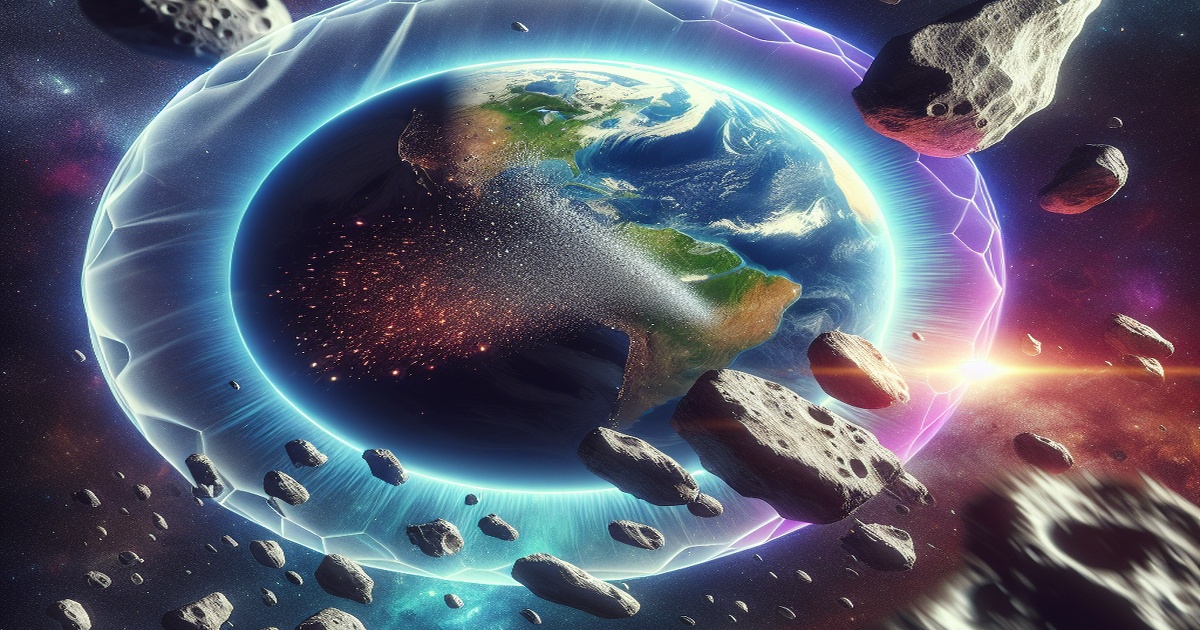Astronomers on the Hunt for Near-Earth Objects
Astronomers estimate that there are 14,000 undiscovered near-Earth objects, including asteroids large enough to cause significant damage, lurking in space. These objects pose a potential threat to our planet, and astronomers are working diligently to identify and track them.
One such astronomer is Nick Moskovitz, who has dedicated himself to becoming an "asteroid detective." He emphasizes the importance of early detection, stating, "Find them before they find you. The sooner you find them, the more options you have for deflecting potentially hazardous asteroids."
In 2022, NASA successfully conducted a first-of-its-kind test, intentionally crashing a spacecraft into a small asteroid and altering its trajectory. This mission demonstrated a potential tool for deflecting asteroids that could pose a threat to Earth.
"It's the only natural disaster that we could potentially prevent," says Kelly Fast, NASA's acting planetary defense officer. "And if you were to find an impact threat to Earth well enough in advance, then you wouldn't have to deflect it much for it to be able to miss the Earth in the future."
Telescopes like the Lowell Discovery Telescope in Arizona play a crucial role in scanning the night sky for potentially hazardous asteroids. These telescopes can detect objects much fainter than the naked eye, allowing astronomers to track their movements and assess potential risks.
Recently, the Lowell Discovery Telescope was focused on the asteroid 2024 YR4, which initially had a 3% chance of impacting Earth in 2032. However, recent analysis has significantly reduced this risk. The asteroid is now expected to miss Earth and has only a 0.004% chance of impact in eight years.
Despite the reduced threat from 2024 YR4, there remains a 1.7% chance that it could impact the moon. This highlights the ongoing need for vigilance and continued efforts to identify and track near-Earth objects.
The impact of a large asteroid can have devastating consequences, as evidenced by the 60-foot asteroid that exploded over Russia in 2013, injuring over 1,600 people. An even larger asteroid, capable of wiping out an entire city, crashed into Earth 50,000 years ago, leaving a massive crater in what is now northern Arizona.
Astronomers like Nick Moskovitz and organizations like NASA are working tirelessly to protect our planet from the threat of asteroid impacts. Their efforts in detection, tracking, and potential deflection techniques are crucial in ensuring the safety of future generations.







13 Comments
Leonardo
Next you'll tell us we need to prepare for alien invasions. Stop the paranoia!
Raphael
If a catastrophic asteroid hits Earth, could we realistically even stop it? I doubt it.
Michelangelo
Investing this much into asteroid deflection seems like a luxury when many people still lack basic necessities.
Donatello
Science at its best—protecting humanity from threats in space that previous generations couldn't have even imagined.
Raphael
The impact predictions went from 3% to nearly zero. Sounds like astronomers aren't even sure about what they're tracking yet.
Muchacho
Scientists claim to have ‘saved’ us from disaster again? Sorry, but not buying into the asteroid hype.
Answer
We’re fortunate to have talented scientists working hard to defend Earth. Keep protecting the planet!
The Truth
The 2013 asteroid impact in Russia shows we truly do need these ongoing efforts. Better safe than sorry.
Answer
Why do we care if an asteroid hits the moon? It doesn't affect our daily lives at all!
The Truth
Glad that the risk from asteroid 2024 YR4 has dropped—this shows exactly why monitoring and early action matter.
Answer
NASA is just looking for ways to justify its budget. This asteroid fear is getting blown out of proportion.
The Truth
Why waste money on something so unlikely when people here on Earth are starving and homeless?
Muchacho
Our future generations will thank us for paying attention and investing in planetary defense today.